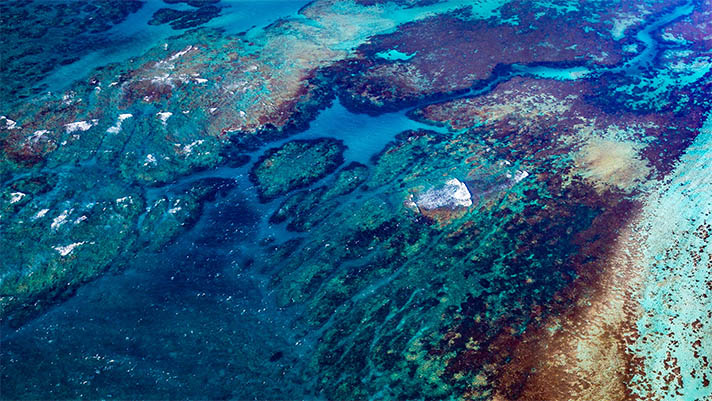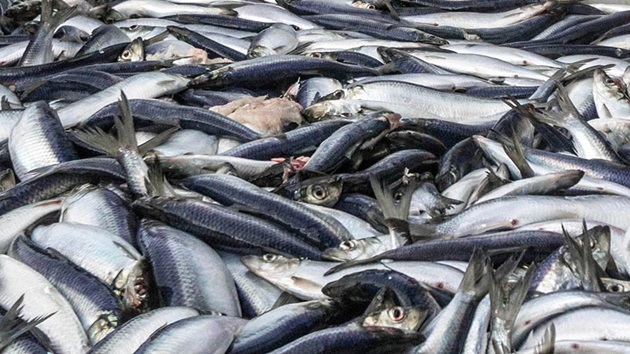While companies and organizations around the world have different definitions of sustainable fishing, the MSC definition is widely accepted across borders, among fishery experts, scientists, researchers, governmental bodies, and environmental NGOs.
Sustainable fishing means leaving enough fish in the ocean, minimizing impacts on habitats and ecosystems. For this to happen, fisheries must be managed effectively.
A growing number of consumers are searching for sustainable, ocean-friendly options to help feed their families. A great and simple way to identify sustainably-sourced products is to look for the MSC blue fish label. Any product that has the label has been sourced from an MSC certified sustainable fishery.
The sustainability of a fishery can be assessed regardless of its size, geography or the fishing method used. Our Fisheries Standard is a science-based way to measure that sustainability. When fisheries are independently assessed to the standard, three main principles are considered:
Sustainable fish stocks
Are enough fish left in the ocean? Fishing must be at a level that ensures it can continue indefinitely and the fish population can remain productive and healthy.
Minimizing impact
What are the environmental impacts? Fishing activity must be managed carefully so that other species and habitats within the ecosystem remain healthy.
Effective management
Are operations well managed? MSC certified fisheries must comply with relevant laws and be able to adapt to changing environmental circumstances.
Why is sustainable fishing important?
Communities worldwide rely on fishing for their livelihoods and as a vital source of food and nutrition. More than a third of the global population relies on seafood as a source of protein, and 38 million people are employed in wild capture fisheries.
If we fish sustainably, we can secure food for the future and help eradicate poverty and hunger.
However, unsustainable fishing practices, such as overfishing, unregulated fishing activities, and excessive bycatch, are putting our oceans at risk.
More than a third of global fisheries have been fished beyond sustainable limits and world demand for seafood continues to grow. Sustainable fishing can reverse this decline and ensure that there are enough fish left in the sea so that fishing can take place indefinitely into the future.
The long-term health of fish stocks is also vital to secure a source of nutrient-rich food to feed a growing population. 16 million more tonnes of seafood could be produced every year if fisheries are managed sustainably, providing enough protein to meet the needs of 72 million people worldwide.
Certified sustainable wild-capture fishing can also reduce the pressure on land-based agriculture as a source of protein. Seafood also has, on average, a lower carbon footprint than land-based animal proteins.
What is overfishing?
How can fishing be sustainable?
Scientists work out how many fish can be safely caught without impacting the future health of the stock. This involves collecting data on the size of the stock, when and where the species spawns, and how many juveniles are likely to survive into adulthood. They also assess environmental factors that may affect the stock, such as predation from other species.Different management measures can also be implemented to protect stocks from overfishing, such as prohibiting fishing during spawning seasons and setting size limits to protect juveniles.
A key aspect of sustainable fishing also involves adopting precautionary measures known as harvest control rules, which require catches to be reduced if the stock population declines. This is particularly important when stocks are shared by several different countries and a collective effort is needed to prevent overfishing.
Fish stocks are also more abundant when targeted by fisheries operating sustainably than those which do not.
“We need to manage fish stocks, globally, on a sustainable basis so they can continue to provide renewable, healthy, affordable and low-carbon protein for humanity.”
MSC Chief Executive Officer
How does sustainable fishing protect the oceans?
Sustainable fishing helps maintain healthy and diverse ocean ecosystems and minimizes impacts on endangered, threatened, and protected species.
All species have a unique role within ocean ecosystems and are part of a balanced food web of predators and prey. The loss of a single species due to overfishing or excessive bycatch can have a cascading effect across the entire food web.
It’s not just fish stocks that benefit from a healthy ecosystem, it can also help the ocean regulate the climate. Carbon dioxide from the air dissolves into seawater and is trapped within different elements of the ocean ecosystem, such as seagrass, the shells of mollusks, and plant-like plankton.
Climate change is already having a significant impact on our oceans and the health of fish stocks, making sustainable fishing more important than ever.

How can sustainable fishing minimize impacts on the environment?
Fishing can impact more than just the species being targeted. If practices are not sustainable, the marine environment can be threatened by issues such as habitat destruction, lost fishing gear, and unwanted catch.Fisheries should have measures in place to reduce bycatch – this includes non-target fish and shellfish as well as marine mammals, reptiles, amphibians and seabirds. This might involve modifying gear, avoiding fishing in areas where unwanted or endangered species are known to live or migrate through, and adapting practices to minimize the risk of interactions.
For example, seabird entanglements can be reduced by setting lines and nets deeper in the ocean and fishing at night instead of during the day. Gear can also be modified to allow non-target species to escape or deter them from getting too close to nets. This includes adding exclusionary devices to allow large marine animals to escape from nets and devices such as bird-scaring lines, or acoustic 'pingers' that repel marine mammals.
Fishing methods that interact with the seabed, such as bottom trawling and dredging, are considered controversial, due to the risk of damage to seafloor habitats. However, these methods can be sustainable if well-managed. Research into seafloor habitats can identify vulnerable areas that should be avoided, including those with sensitive slow-growing species, such as corals. Fishers can also use lighter gear to reduce the impact of contact with the seabed and, in some cases, set nets at a depth that avoids contact altogether.
Steps can also be taken to prevent fishing gear from being lost or discarded at sea, and to reduce the impact of any gear that does become lost. This can include monitoring and retrieving lost gear and using biodegradable panels or locks on gear such as lobster pots, to allow species to escape.
How MSC Certified fisheries are improving
What is the MSC’s approach to certified sustainable fishing?
The Marine Stewardship Council recognizes and rewards fisheries operating sustainably through our fisheries certification program and blue fish label.
Our Standard is the leading measure of sustainable fishing and is rooted in global best practice in fisheries management and widely accepted fisheries science.
Fisheries volunteer to be assessed against our Standard by an independent third-party and must meet the three principles of our Standard:
- Sustainable fish stocks
- Minimizing environmental impacts
- Effective fisheries management
Fisheries that achieve certification are audited every year and may be required to make further improvements to their practices to support the protection of marine resources for future generations.






